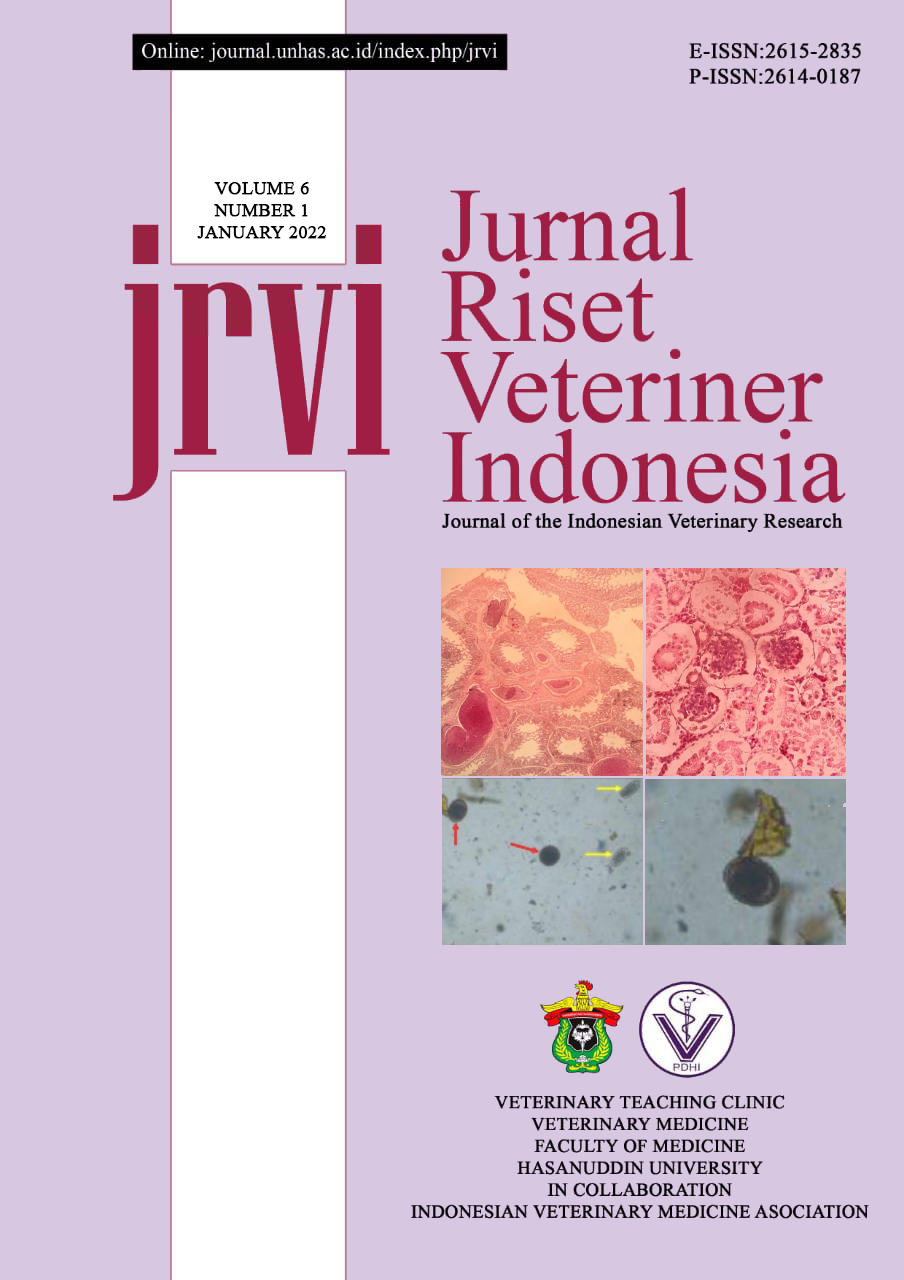Abstract
The chicken was sick for 6 days, weak and disrupted growth. Necropsy confirmed that several organs was bleeding and containing fibrin exudation. The results of histopathological examination showed the presence of necrotic encephalitis, hemorrhagic tracheitis, hemorrhagic and necrotic pneumonia, hemorrhagic epicarditis and myocarditis, hemorrhagic enteritis, hemorrhagic and necrotic hepatitis, also hemorrhagic and necrotic glomerulonephritis. Microbiological examination confirmed the discovery of Eschericia coli bacterial agents that can hemolyze blood in the heart, lungs, and intestines. Parasitological examination confirmed that no parasitic agent was involved in this case. From this case study, it can be concluded that the single agent that causes pathological changes was found in the form of pathogenic E. coli bacteria (colisepticemia) which was exacerbated by unfavorable farming conditions.
Keywords: Escherichia coli, colisepticemia, broiler, pathological findings

This work is licensed under a Creative Commons Attribution-NonCommercial 4.0 International License.

